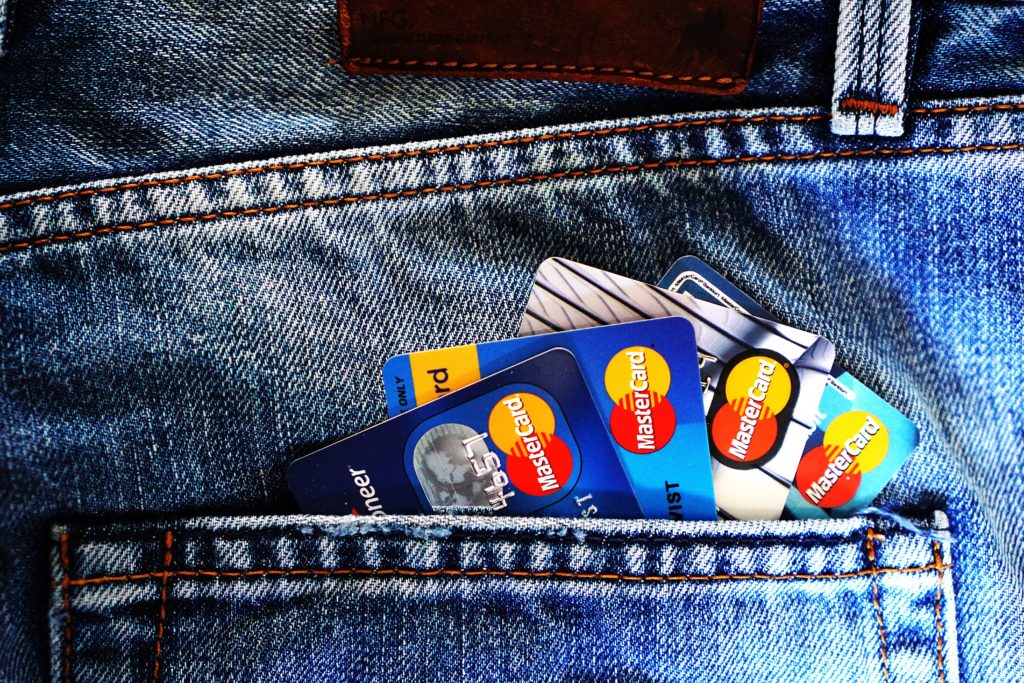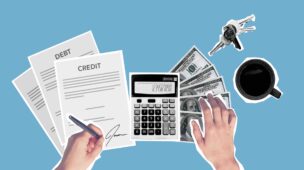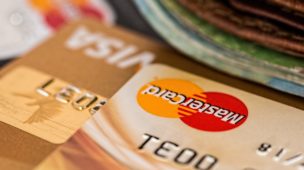Reading time: 18 minutes
This post may contain affiliate links. If you click these links and purchase something we may earn a commission. This helps us provide the information here free of charge to you. Continue Reading.

As 2019 came to an end, most Americans were already struggling with debt. Now, with the COVID 19 pandemic, many of us are drowning in debt more so than ever before.
I want to tell you that it’s okay if you’re in debt because I am here to help you! If you know anything about me, it’s that I simply want to help get you out of debt and empower you!
The Treasury Department says that consumer debt in America is well over 14.2 trillion dollars and growing.
189 million Americans have credit cards with the average credit card debt coming in at just under $9,000 per household. When you mix in mortgages, student loans, and medical bills, you can see that being in debt is, unfortunately, a way of life in America.
Just because this is the way of life for most does not mean you have to live your life owing and making debt payments forever. There are many methods you can instill right now to start paying off your debts quickly and efficiently.
Where To Start?
Not sure where to start? That is the purpose of this article!
I will walk you through some of the best ways to get control of your debt, regardless of what kind it is, and find you the plan that works best with your financial situation.
Being in debt is not the end of the world, while it may make things more difficult, there are ways to combat it and take back control of your financial future.

What are the Best Ways to Pay Off debts?
When deciding on the best method to pay off your debt, there are three primary options available for debt management: Debt Snowflake, Debt Snowball, and Debt Avalanche.
Even though it’s warm and sunny where I live, I still like to use the snow as an example of the three debt payoff strategies!
1. The Debt Snowflake Method is the Best Ways to Eliminate Your Debt Fast
If you are in a snowstorm, you are not necessarily concerned about the individual snowflakes, but instead, the large amount that can group together and cause a blizzard. One snowflake may not seem like much, but when it’s with a bunch of other snowflakes it can have a huge impact.
This example can be applied to your finances in regards to paying off your debt, and it’s referred to as the debt snowflake method.
Snowflake
A snowflake refers to small amounts of money that you can save or find throughout the day.
These ‘snowflakes’ can come from something as simple as buying a medium coffee instead of a large or finding money while doing laundry. It can also be from something a little bit larger, like getting a bonus at work or taking public transport for the month instead of using your car.
Debtors will take those small micro-savings on a daily basis and put it towards paying their debt obligations. Even just saving a few bucks per day can equate to $1,200+ per year or more.
The impact from the debt snowflake method is somewhat limited and may not make a huge difference on larger debts, but it can definitely make a difference in paying back your smaller amount of debts.
The snowflake method highlights that even small amounts can make a difference in your debt over time. When you take these smaller sums and start to put them towards your debt (the small snowflakes), they may not seem like they are making a big difference, but over time those small amounts will add up to a big chunk of debt relief.
For people who don’t have the financial backing to make large repayments towards their debt, the snowflake method may work for you. It shows that even the smallest monetary payments will add up and ultimately make a big impact on your finances.
There is great flexibility to this plan because you can pay what you can when you can, and you are more likely to be mindful when deciding whether or not to make those small purchases in the future.

2. The Best Ways to Eliminate Your Debt Fast – The Debt Snowball Method
Unlike the snowflake method that works for you whenever you can pay a small amount, the snowball method is a debt strategy that has a structured plan to get rid of your debt.
Let’s take it back to our snow example. When you are building a snowman, you typically start with a smaller snowball and roll it on the ground to collect more snow. You continue this until you have built the best snowman (or snow woman) on the street. Just like with our previous method, this is applicable to paying off your finances.
How it Work?
Now, rather than a snowball, picture your debts. You take the smallest debt you’ve got and pay as much as you can on this debt while making minimum payments on the other debts. Once that smallest debt has been paid off, you take however much you were paying on that debt and apply it to the next smallest debt in line on top of the minimum payment you were making before.
Just as your snowball gathers snow and grows in size, so make these debt payments. Before you know it, your snowball (aka your debt payments) have evolved to be very large. By the time you’re on your last debt, it should be quite easy to knock out (even if it’s a large debt, like a home mortgage).
Snowball Method is a Practical Plan
The snowball method is a practical plan that debtors with limited financial resources may be drawn to because of the affordable month-to-month basis on which you make your payments.
The advantage of utilizing this method in particular on your debts is the fact that it’s a structured plan that people are more likely to follow due to both the plan and the goal being clearly laid out.
It is much easier to stick with debt payments if you have a payment amount in mind that doesn’t particularly change, and can increase your motivation by wanting to pay off your debts faster.
The debt snowball method is excellent for those that have multiple debt payments that seem never to go anywhere. It’s a great way to get these debt payments knocking outs and have a set timeline in place.

3. The Best Ways to Eliminate Your Debt Fast– the Debt Avalanche Method
When there is an avalanche in the mountains, the damage will start at the highest peak, and then tumble down the mountain. The avalanche method in regards to your finances kind of works the same way, except instead of snow, you are attacking your debts with the largest interest rates first, then moving down in size.
The basic premise of this method is a lot like the snowball method in regards to once you pay off one debt, you put the amount of that debt payment towards the next smaller debt. The only difference here is you are focused on the debt with the highest amount of interest, which can save you more money over time.
Because you are starting with your most costly debt first, every payment you make towards getting debt-free will save you money than paying it off with an alternative method. The efficiency and speed that comes with utilizing this avalanche method make it a very popular choice if you have the extra money to put towards paying off your debts.
Just like with the two previous plans, there are disadvantages to using this method. For the avalanche method of paying off your debt to work, you must be highly self-disciplined and have a lot of self-control when making your payments. If you miss just one, the risk of getting a high-interest rate debt can undo a lot of the financial progress you made. It also may be more challenging to stay motivated with this method because you probably won’t see improvement right away, but don’t let that discourage you! It’s a great option if you are looking to get rid of your largest debts first, opening up your financial freedom.

Debt Consolidation: How to Consolidated Your debt
If you have a lot of different types of debt, or debt from multiple creditors (especially high-interest debt), you may want to consider consolidating or restructuring your debts into a singular (and more manageable) loan.
It is becoming easier to find unsecured personal loan options that you can use to consolidate your multiple debts into one simple monthly payment.
Debt Consolidation in Comparison of Other Debt Relief Options- How to Get Out of Debt Fast?
How does debt consolidation compare with other debt-relief options and debt payoff strategies out there?
Mostly, when you consolidate your debts, you are rolling higher-interest debts into one single loan that ideally has a lower interest rate than the debts that you’re consolidating. This is an excellent option if you have a lot of debts with higher interest rates like credit card bills.
You are taking debts from multiple places and condensing it down into one monthly payment. This one monthly payment is likely to have a lower interest rate than your debts, and that monthly payment is likely to be much lower than what you were paying on the other debts combined.
Even if you have a manageable amount of debt and just want to reorganize your debts into a more manageable payment plan, I still think that you may want to consider debt consolidation.
When you set out to consolidate your debt, there are a few different approaches that can concentrate your payment amounts into one monthly payment.

How To Get Out Of Debt fast with O% Interest Balance-Transfer Credit Card
How To Get Out Of Debt fast? Credit card companies are always competing with each other. One way they win over new customers is by agreeing to pay off all of your credit card debts and have you pay them back. To sweeten the pot, they will oftentimes offer 0% interest for the first 12 months. Just be sure to pay it all off within the year AND don’t go run up more credit card bills along the way.
Fixed-Rate Debt Consolidation Loan
These are usually personal loans or signature loans. Meaning, there is no collateral involved with these, so your credit needs to be at least halfway decent. The bank or credit union will pay off your creditors with this loan, and then you can repay that loan in installments over an agreed-upon set term. Typically a lender will offer you a repayment plan between 2 to 5 years and during that period you will be locked in with a fixed-rate that won’t change throughout the life of the loan
Cash-Out Refinancing
A cash-out refinance a way not only to borrow money but also to refinance your mortgage at the same time. This is mostly like taking out a home equity loan, except you refinance your mortgage in the process. Your old mortgage will be replaced with the new one, so now there is only one payment being made a month that covers both your mortgage and your debts. Paying off your debts and getting a lower interest rate on your mortgage is a fantastic way to kill two birds with one stone!
Note About Cash-Out Refis and Mortgage Refinancing
Now is the best time to consider a cash-out refinance or refinancing your mortgage altogether. Because the economy is in a pinch due to Covid-19, mortgage rates are at historic lows!

Borrowing from Your 401K
If you are currently paying into a 401K many plans may allow you to borrow against your retirement savings to make debt payments. This option involves a little more risk than the others because if you don’t end up paying back your loan, you have lost out on your retirement savings you were working on saving over time. While your employer’s rule may vary, they typically allow users to borrow up to half of your retirement account for up to five years. You can then use this money to pay off your debt with typically lower interest rates.
Whole Life Insurance Loan
If you’re paying into a whole life insurance plan, then it’s likely this plan has built up some cash value. If you’re stuck with high-interest that you’re having trouble paying, you may want to look into taking out a loan against the cash value of your insurance policy.
It’s important to remember that debt consolidation will not be the perfect plan for everyone. But I do think that anyone who has high-interest credit card debt should consider debt consolidation.
Going this route will not fix the spending habits that got you into debt in the first place, and therefore involves more risk than sticking with a repayment plan. For example, if you pay off your credit cards with a loan, do you have the discipline needed to not use those cards again and go deeper into debt?
However, if your debt does not exceed 40% of your gross income (excluding our mortgage) and you have a decent enough credit score that will qualify you for a 0% balance transfer or low-interest debt consolidation loan, this may be a viable option.
Best Ways to Reduce or Pay Off Medical Debt
If you are struggling with unpaid medical debts, then don’t worry; you are not alone! Over 100 million Americans currently have medical debt that they owe to a doctor, hospital, or health provider.
I wanted to give the medical section because there are a lot of tips and tricks that many ItsSuzyDarlen.com readers simply don’t know about!
Negotiate Costs on Your Own
You should attempt to call your medical or health provider and ask them outright if there are any options you can do to reduce or outright remove your medical debt. There may be options available that offer you a payment plan, which makes your medical debt more manageable.
The billing staff for these health providers knows that the majority of people with medical debt are not able to pay one large sum to pay off their debts, so they may be willing to break up your payments so you can pay it off in an appropriate length of time.
Ask for a Detailed Copy of Your Medical Bill
Currently, there are over 71,000 different billing codes that are used by medical professionals, and more often than you’d think people are billed for things they had never done.
Whether it is a second dose of a cheap medication to being billed for a surgery you never had, hospitals and medical personnel make mistakes. This is why it’s essential to request a detailed bill from your hospital bills and take the time to comb through them to spot any incorrect charges.
It would be best if you also consider reaching out to a medical bill advocate that will argue your bill on your behalf. Since they are skilled in reading medical bills, they may be able to spot charges that you wouldn’t have known even existed, saving you even more money on your medical bill.
Appeal Your Insurance Company’s Decisions
A lot of medical debt exists because the patient’s insurance company decided not to cover some healthcare visits or procedures. If you have medical insurance, this is likely the case for you.
Call up your health insurance and see what part of your treatment they covered, and see what they didn’t cover. You can formally submit appeals and requests for decisions to be overturned. Believe it or not, this does work a lot of the time!
Apply For Medicare Or Medicaid
If you meet specific qualifications, it might be worth it to consider applying for Medicare or Medicaid to see if they can cover the costs for your medical bills.
What’s great about these options is that if you are approved, they will retroactively pay back up to 90 days worth of medical care, so it might be worth applying. If you are approved, you will instantly be covered for any future medical visits and exempt from collecting more medical debt.

How to Refinance Student Loan Debt
Through refinancing student loans, borrowers can save money by replacing existing education debt with newly refinanced loans that often have lower interest rates and lower monthly payments.
And, yes, believe it or not, your student loans can be refinanced or consolidated. Just because most of them are by the government doesn’t mean there isn’t any wiggle room!
Get a Loan to Consolidate Multiple Smaller Student Loans
This option is only applicable if you have multiple student loans. If you currently have any federal or private student loans with different loan servicers, you can consolidate your student loans to get a single loan, which will cover all of your student loans. Consolidating will likely result in lower interest rates and lower monthly payments.
Refinance Your Student Loans for a Lower Rate
There is also the option to refinance your student loans to get a lower interest rate. Your old student loan simply gets change with a new student loan that has a lower interest rate and lower monthly payments. If you had $20,000 in student loans and only owed $8,000 then you would only need to refinance that $8,000 that you owed, you don’t refinance the original $20,000

Loan Forgiveness Programs
Many public-sector and government-level jobs, as well as jobs with very large companies, will offer to pay off or have their employees’ student loans forgiven. For example, a public school district may offer to forgive all student loans for teachers that teach in their district for 5 consecutive years. It never hurts to ask your HR department if they offer any forgiveness or reimbursement programs for student loans and tuition.
What Is Non-Profit Credit Counseling
Although it is possible to get out of debt on your own, sometimes it may be beneficial to reach out to a credit counseling company to help. The National Foundation for Credit Counseling is a great nonprofit organization that can connect you with someone in your area that can help you create your specific plan to get out of debt.
Through reputable credit counselors and debt relief companies, these types of nonprofit counseling programs may even be able to negotiate lower credit card debt on your behalf.
While negotiation is taking place, you will be responsible for making minimum monthly payments towards your debt until they have decided on an amount you owe.
How To Prevent It By Following a Budget
I want to leave you with one final tip: Using a budget is the best way to prevent going back into in the future, and it is one of the best ways to pull yourself out of any current debt-filled hole you may have fallen into.
Sitting down and making a list of all of the money you have going in and where all of your money goes out to is a high starting point. You need to make sure every single dollar is accounted for.
Let an App Budget for You
Personal Capital is an app that I recommend to all of my readers. It syncs up with all of your bank accounts, investments, and credit cards to map out where every penny comes from and where every penny goes out to. It’s super easy to use! (It’s much better than the Mint app!)









